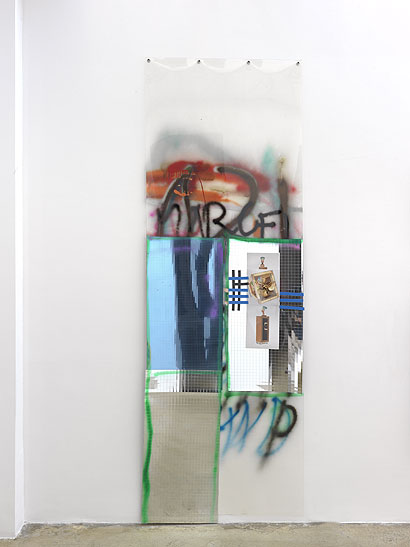|
|
||
|
Why have an exhibition in a single space when you can spread it across 25? An annual event in Toulouse, the Printemps de Septembre, attempts to create a contemporary art exhibition in multiple venues across the city. Shows take place in churches, a Victorian water purification plant, a small 1970s modernist cinema, a converted deco garage and more straightforward white cube project spaces. This year’s edition, curated by Anne Pontégnie, was loosely based on the rise of contemporary abstraction. The central hub of this mini-biennial was the Abattoirs gallery, which featured paintings by artists such as Alex Hubbard, Josh Smith, Sergej Jensen, Isa Genzken, Joe Bradley, Christopher Wool and Chris Johanson. These canvases of splattered pigment, scrawled spray paint and fluid oils recalled the 1950s efforts of Pollock and Rothko. The sense of abstraction was echoed in other mediums – Luke Fowler’s video of sound vibrations, photographic footage of iconic Japanese choreographer Tatsumi Hijikata and Jim Drain’s sculptures of smashed plates and upturned lamps. Some of the most successful works responded more directly to the architecture of the city. Haegue Yang’s perforated metal cubes filled with white candles, flickering electric tea lights and glass vases, placed in the centre of a chapel were an emotive comment on faith and worship, light and shadow. Thomas Houseago’s trio of sculptures in the vaulted courtyard of the Musée des Augustins echoed the tone of the surrounding columns and gargoyles. Josh Smith’s almost comic Happy Fish bronze sculpture was brought to life by the sound of the rushing waters of the River Garonne. The work that stood out was Mark Leckey’s investigation of failure – Out Demons Out, a “ghost” of an unfinished film from 2007. “At the time I could not shake myself from a sense of stuckness, an inability to move, both in me and the culture that I was living in,” he wrote. Screened on an old analogue TV set and two speakers, the video was an amalgamation of found footage of a hippie couple in a car accident, VHS static, long-haired spectres hovering in the corners of his former London flat, and a haunting voiceover by a German girl calling for utopian culture. The result was an eerie statement on the collapse of 1960s idealism and Leckey’s relationship to failed ideas. Yet this work, and its installation, also provides a fascinating comment on space and interior architecture. On one wall of the darkened room were two shadowy photographs of the artist’s former home on Windmill Street – one of the interior, one of a model of the space. Reality and fiction blur, time becomes unstable; the gallery room becomes a portal to another location. As a whole, the exhibition provided a kind of meta-narrative to the city. The streets here are intellectual pathways between creative ideas. The experience of wandering turns into something psychological and amorphous. Here, the museum transforms from a static snail to a spider with many legs. Printemps de Septembre, Several venues across Toulouse. 23 September – 16 October 2011
|
Image Printemps de Septembre
Words Francesca Gavin |
|
|
||


















